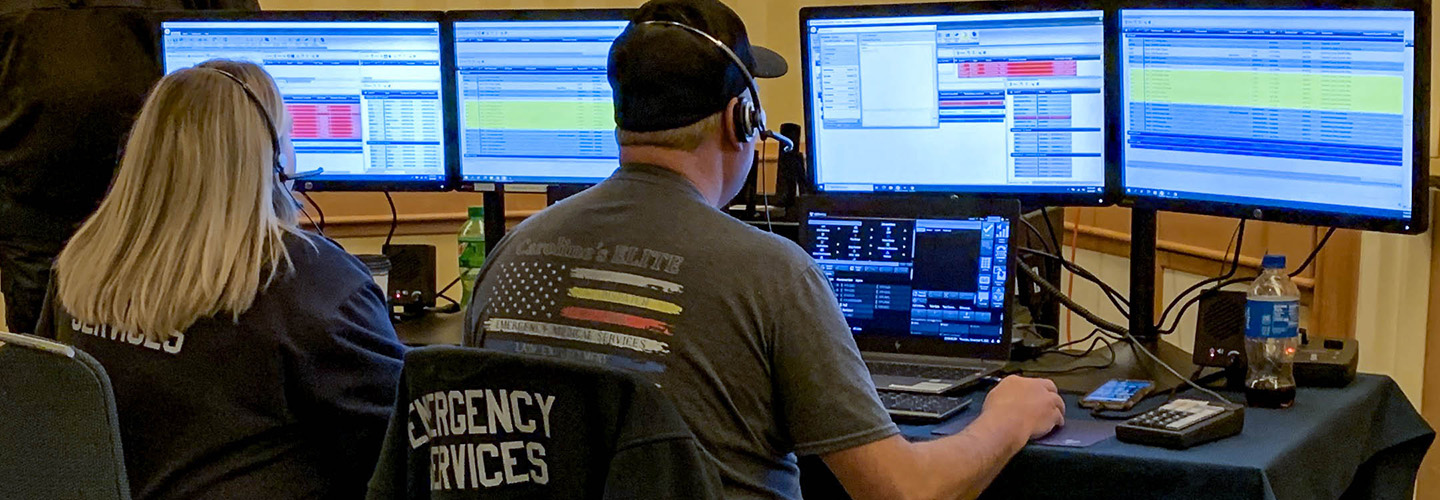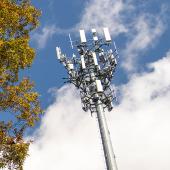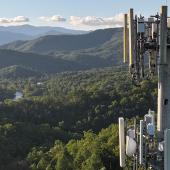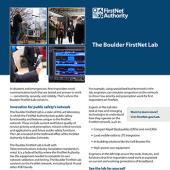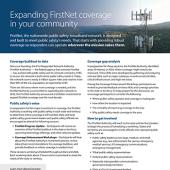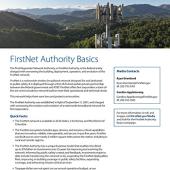When a person calls 9-1-1 to report an emergency, they rely on Public Safety Answering Points (PSAPs) to answer the call every time, without fail. They expect that the call will reach someone who can quickly and efficiently send help to the right place. Lives depend on emergency telecommunicators being there, ready to take the call.
A history of PSAPs
The “9-1-1” phone number was established as the universal emergency number in the United States nearly 60 years ago. In 1968, the first 9-1-1 call in the United States was made in Haleyville, Alabama. Over the following decades, 9-1-1 services expanded across the country and PSAPs were established nationwide to answer emergency calls.
The role of the PSAP has continued to evolve into that of a multi-functional emergency communications center (ECC) and the technology that powers 9-1-1 services has evolved to meet these modern demands. Behind every call is an intricate web of emergency communications technologies, and PSAPs across the nation are enhancing these technologies by transitioning from analog systems to digital Next Generation 9-1-1 (NG911) services.
In the NG911 environment, call-takers and dispatchers now have access to more data than ever, helping them to locate callers and first responders faster, see critical event details, and provide higher level situational awareness to those lifesaving emergency services officials who are en route. Data may include enhanced caller location data, AI-assisted real-time translations, and real-time photos and videos. With this influx of new data sources and types, the role of the 9-1-1 telecommunicator continues to rapidly evolve. They need to be able to safely and securely access, analyze, and share data in real time, as it can be invaluable to on-the-ground responders during emergencies.
Successful integration of data into 9-1-1 operations begins with access to a reliable, secure, interoperable network. This is where FirstNet, the nationwide public safety broadband network, comes in to support the PSAP and ECC community.
FirstNet and PSAPs today
Renee Gordon, director of the Department of Emergency and Customer Communications in Alexandria, Virginia, understands the importance of having a reliable broadband network dedicated to public safety. “We must have coverage and the ability to download information quickly — both in the ECC and in the field. As we move closer to Next Generation 9-1-1 capability, pictures and video won’t be as valuable if we don’t have the coverage and connectivity to transmit them,” Gordon explained.
Supporting 9-1-1 redundancy, remote call taking, and TERT
Today, FirstNet helps telecommunicators continue their mission even when faced with disruptions. FirstNet connectivity can be used as a backup to PSAP landlines, offering redundant communications in times of need.
Remote 9-1-1 call taking is another powerful capability FirstNet can add to the PSAP’s toolbox. For example, during a disaster where a PSAP may be damaged or inaccessible, staff can work remotely from another location. This capability also allows a Telecommunicator Emergency Response Taskforce (TERT) from another jurisdiction to provide relief to the impacted PSAP by assuming call-taking and dispatching functions remotely. Similarly, FirstNet has been used by TERT teams to facilitate 9-1-1 operations in the field.
Aiding in communications with responders in the field
On “blue sky” days, when a PSAP is not in crisis, FirstNet still plays a valuable role in the emergency communications ecosystem by powering the devices that responders use to communicate with the PSAP. Not only are these responders able to use FirstNet devices like a traditional smartphone, but they can also integrate emerging technologies like Mission Critical Push-to-Talk (MCPTT) that allow enhanced interoperability with land mobile radio (LMR) and improved coverage in rural areas or inside buildings that lack radio frequency coverage. In the PSAP, telecommunicators can use a FirstNet-enabled console that integrates into their systems to communicate with the field seamlessly, either over the FirstNet network or LMR.
The network also helps responders stay in touch with the PSAP while managing complex incidents and events from the field. FirstNet deployable assets can provide coverage for critical incidents and planned events, as well as offer back-up connectivity for PSAPs. In-building solutions, like the Cell Booster Pro, enhance FirstNet coverage inside buildings where coverage is often weaker.
Preparing for the PSAPs of tomorrow
The public safety community is at the core of the FirstNet Authority mission. As emergency communications technology evolves and the needs of responders change with it, the FirstNet Authority is committed to ensuring PSAPs have the tools and connectivity they need to answer the call and save lives. As PSAPs integrate emerging technology like AI, cloud services, and new tools that enhance data quality, the FirstNet Authority will be steps ahead making sure the solutions of tomorrow are supported seamlessly.
That is why the FirstNet Authority has made significant investments in network upgrades, including to upgrade the FirstNet network to 5G. The enhanced speeds, bandwidth, and capabilities of this 5G network dedicated to public safety will ensure that FirstNet can support the needs of the PSAPs of tomorrow.


